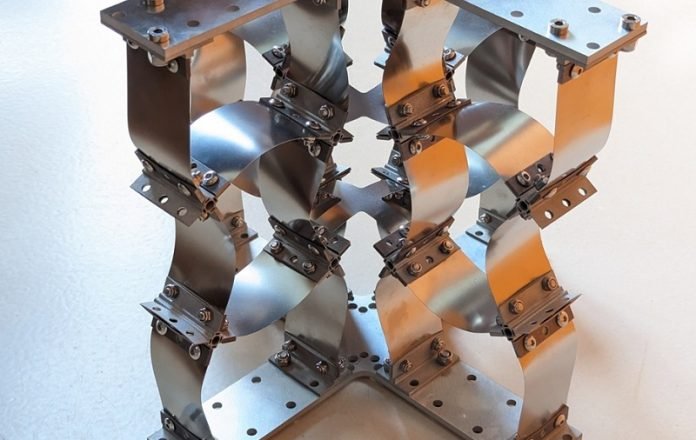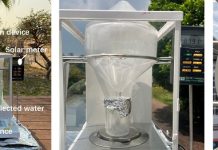
Would you rather run into a brick wall or into a mattress? For most people, the choice is not difficult.
A brick wall is stiff and does not absorb shocks or vibrations well; a mattress is soft and is a good shock absorber.
Sometimes, in designing materials, both of these properties are needed. Materials should be good at absorbing vibrations but should be stiff enough to not collapse under pressure.
A team of researchers from the UvA Institute of Physics has now found a way to design materials that manage to do both of these things.
In the world of materials, there’s usually a trade-off: a material is either stiff, meaning it can resist bending and stretching, or it’s good at absorbing vibrations (like the shocks from bumps and jolts), but not both.
Imagine if we could have the best of both worlds, though!
It would open up so many cool possibilities, from creating tiny, precise scientific instruments to building space rockets.
Well, a group of scientists from the University of Amsterdam has done just that – they’ve found a way to make materials that are both stiff and great at soaking up vibrations, while also being light.
How did they do it? David Dykstra, the lead author of the research, says the secret is in materials that “buckle,” like thin sheets of metal.
If you’ve ever seen a sheet of metal bend under pressure, that’s buckling.
When these buckled sheets are cleverly combined, they can absorb vibrations really well. Plus, they keep most of the stiffness of the original material, and because the sheets don’t have to be thick, the final material stays pretty light.
The scientists studied these buckling materials in detail and found that they really do have this awesome combination of properties. That’s a big deal because it’s something that doesn’t usually happen in regular materials.
So, what does this mean? These new lab-made materials, also called metamaterials, could be used in a bunch of different ways.
For example, they could help improve things like spacecraft and cars (which are pretty big) all the way down to things like microscopes or tools used to create tiny structures (which are really, really small).
Dykstra sums it up perfectly: “Humans like to build things – small things and big things – and we almost always want these structures to be light. If that can be done with materials that are both stiff and good at shock-absorbing, many existing designs can be improved and many new designs become possible.
There really is no end to the possible applications!” It sounds like this exciting discovery is just the beginning!



